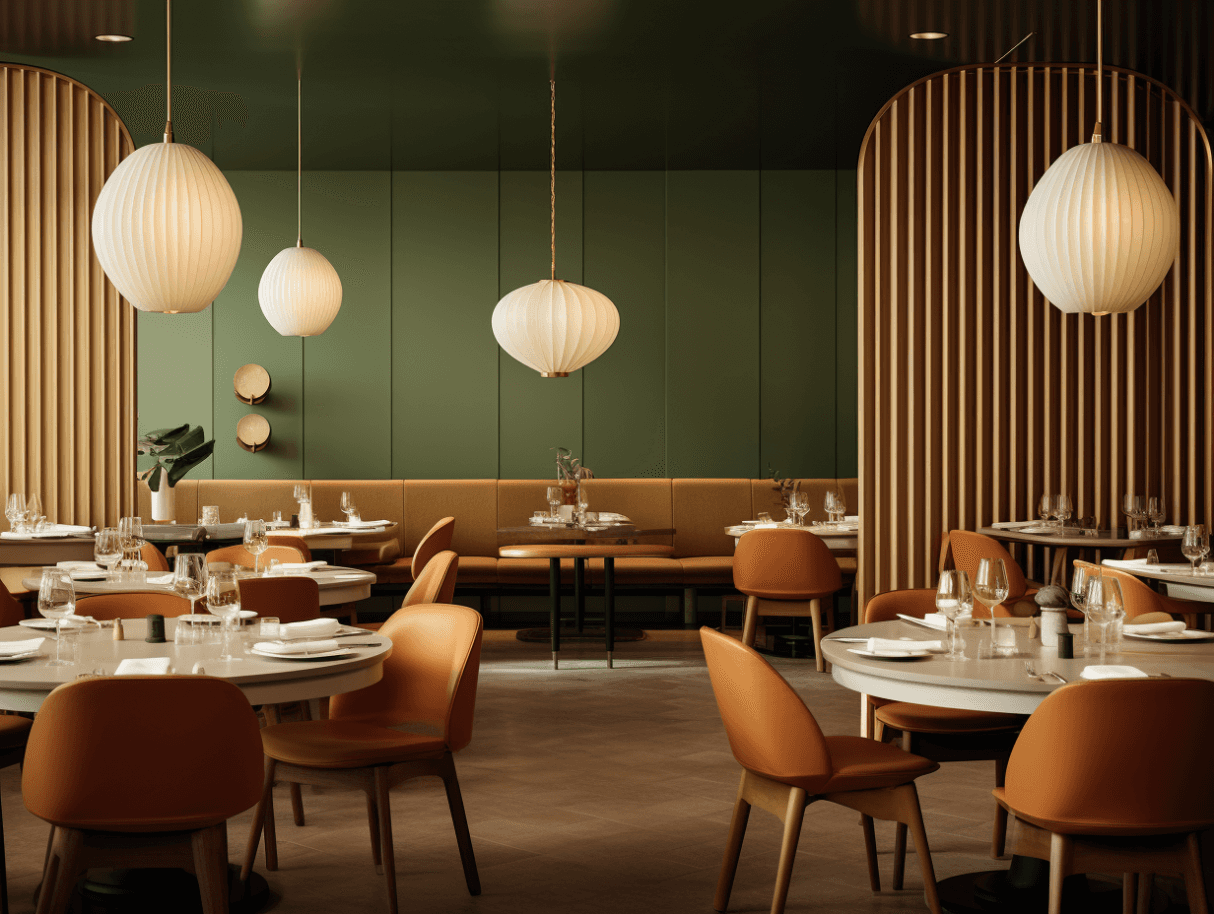The Future of Restaurant Design
The future of restaurant design is evolving to meet the demands of technology, sustainability, and customer experience. From integrating smart spaces to prioritizing eco-conscious materials, this blog explores the exciting trends reshaping the dining industry in India and beyond.
More Articles
Restaurant design has always been an intersection of aesthetics, functionality, and storytelling. In an era where dining is no longer just about food but about the overall experience, restaurant interiors have become pivotal. With India’s booming culinary scene, the future of restaurant design will focus on creating spaces that combine tradition, technology, and sustainability to cater to evolving consumer demands.
A Shift Toward Sustainable Design
As environmental consciousness grows, restaurant owners and architects are turning to sustainable practices.
Eco-friendly materials: Bamboo, reclaimed wood, and terracotta tiles are gaining popularity for their natural appeal and low environmental footprint.
Energy-efficient spaces: Restaurants are embracing renewable energy sources, LED lighting, and HVAC systems optimized for minimal energy use.
Local artistry: Handcrafted furniture and decor sourced from Indian artisans not only support local businesses but also add cultural depth to the design.
By creating spaces that feel closer to nature, restaurants are crafting meaningful connections with their patrons.
Smart Spaces: The Rise of Technology in Design
Technology is no longer just a back-end tool for restaurants—it’s becoming part of the customer experience.
Smart tables: Imagine touchscreen tables allowing diners to place orders, call waiters, or pay bills seamlessly.
AR-enhanced dining: Augmented reality menus offer immersive storytelling by showcasing ingredients' origins or preparation techniques.
IoT integration: From temperature-controlled wine racks to automated lighting that changes based on the time of day, smart IoT devices are revolutionizing restaurant operations.
Tech integration ensures that dining becomes an effortless, engaging journey.
The Blend of Tradition and Modernity
In India, cultural heritage plays a significant role in shaping restaurant design. However, the future lies in harmoniously blending this tradition with modern aesthetics.
Regional architecture revival: Drawing inspiration from local temples, palaces, or havelis while adding contemporary touches creates unique and inviting spaces.
Minimalist yet rooted: Clean lines and uncluttered designs paired with traditional patterns, jali screens, or vibrant murals balance the past and present.
Cultural storytelling: Each element of the restaurant’s design—from tableware to wall decor—becomes part of a larger narrative.
Restaurants that celebrate India’s rich history while embracing innovation are likely to leave lasting impressions.
Emphasis on Flexible and Experiential Spaces
The future of dining focuses on flexibility and experiences that go beyond food.
Multi-functional layouts: Spaces that seamlessly transform from casual cafes during the day to fine-dining venues in the evening cater to diverse audiences.
Outdoor dining: Post-pandemic preferences have shifted toward open-air or rooftop seating that offers a safe and scenic dining experience.
Themed interiors: Story-driven spaces, like a restaurant inspired by a Mughal garden or an industrial chic design, create memorable experiences that customers keep returning to.
Flexibility ensures that restaurants stay relevant, no matter the season or trend.
Human-Centric Design
While technology and sustainability are shaping the future, the heart of restaurant design remains human connections.
Comfort over opulence: Ergonomic seating, ambient lighting, and acoustics that allow easy conversation create a welcoming atmosphere.
Inclusive spaces: From wheelchair-friendly layouts to sensory-friendly designs for neurodiverse diners, inclusivity is gaining prominence.
Personalized experiences: Subtle design elements, like private nooks for intimate gatherings or communal tables for larger groups, cater to different customer preferences.
Ultimately, the future of restaurant design is about creating spaces that make people feel seen and valued.
Conclusion
The future of restaurant design in India is an exciting blend of tradition, technology, sustainability, and human-centric principles. As architects and designers, we hold the power to shape spaces that go beyond visual appeal to create truly immersive experiences. Whether through eco-friendly materials, smart technology, or cultural storytelling, the next generation of restaurant designs promises to inspire and delight.
Rabiraj Kannan
Rabi is the creative guy behind Oddworks, an architectural studio known for its innovative and personalized approach to design. He blends modern and timeless architectural elements to create spaces that reflect the personality and lifestyle of their inhabitants. His work combines artistic vision with practical solutions, ensuring each project is both inspiring and enduring.
Similar Topic













